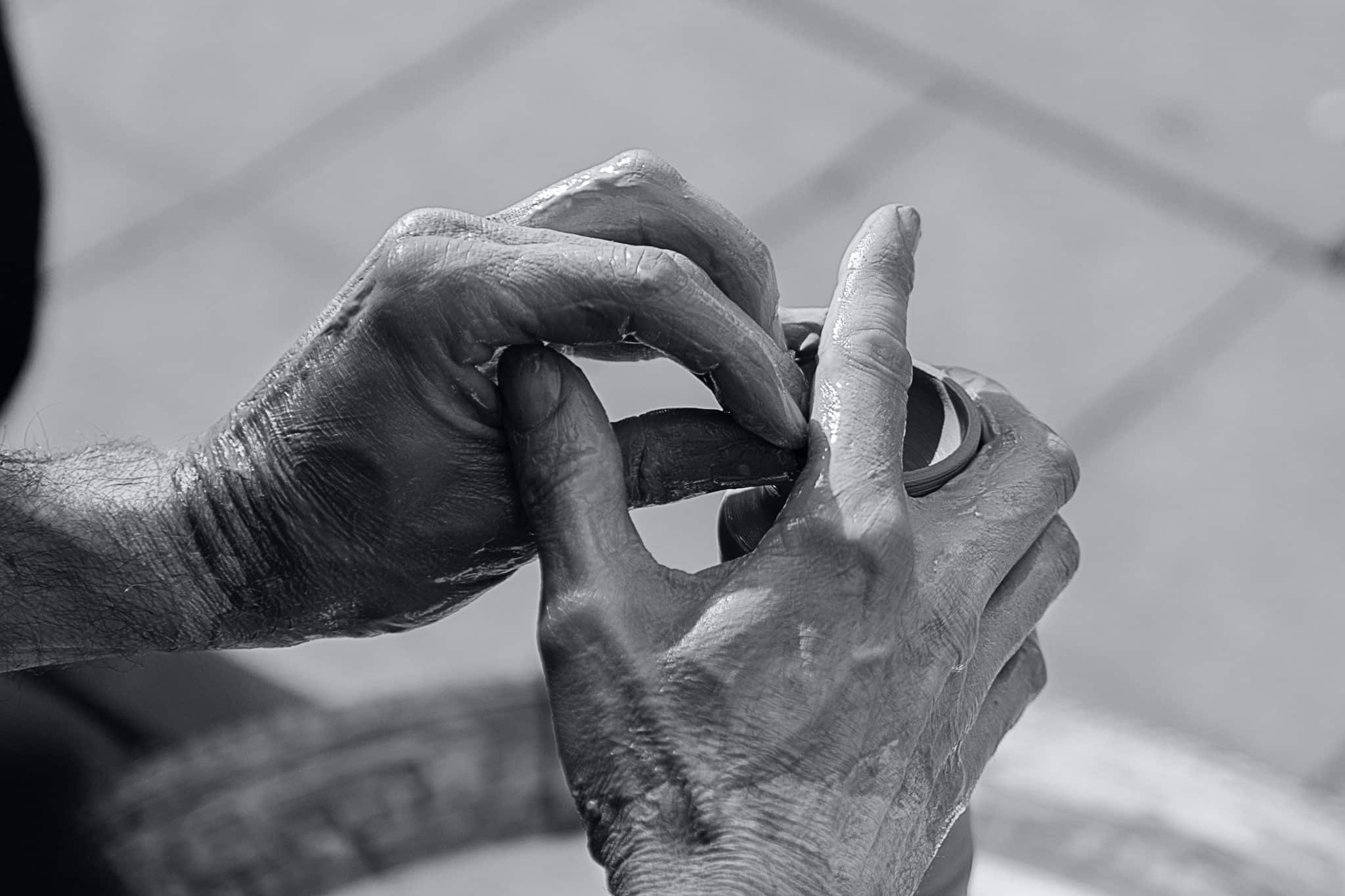How do you know if an elderly person is suicidal?
On World Suicide Prevention Day (September 10), Salt&Light recognises all who journey with those struggling with suicide.
by Christine Leow // September 8, 2023, 6:33 pm

Elderly suicide is on the rise in Singapore. But family members and those around the elderly can help by spotting the signs and getting them professional help. Photo by Quino Al on Unsplash.
TRIGGER WARNING: This story contains material about suicide that some may find distressing. Reader discretion is advised.
Grandma had been suffering from cancer. But she had refused to undergo chemotherapy even though it could have bought her another year, maybe two, of life. In her mind, the risks that came with the treatment were too great to bear.
At 68, consigned to golden years that have been robbed of their shine by illness, Grandma became depressed. She withdrew from her usual social circle, became moody and often sat on the sofa staring blankly into space.
“She had expected to have at least 10 more years of life,” explained Naomi Toh, Senior Counsellor at Samaritans of Singapore (SOS) who shared this story.
Grandma lived alone with her domestic helper. But her family checked in on her often. When they noticed that she no longer had the same zeal for life, they tried to intervene. Grandma refused to see a psychiatrist.
After about six months, she jumped to her death.
The top three problems the elderly cited were medical problems, family problems and loneliness.
When that happened, her granddaughter, who is in her late 20s and close to her, became distraught. She sought help from crisis hotline Samaritans of Singapore (SOS).
Said Naomi: “To see Grandma deteriorate physically and mentally was an emotional struggle for her as she went through anticipatory grief.
“The loss of Grandma to suicide was a huge shock and she was in disbelief as Grandma didn’t articulate any suicide ideation to the family members.
“For my client, it was like, ‘My grandma is very strong and has been resilient through the years. She should have been in the stage of life where she is enjoying herself. If she had gone through chemo, she could have extended her life.’”
Counselling helped the granddaughter “make meaning” of the tragedy. Grandma had been a strong-willed matriarch. She had wanted to be independent and had not wanted to be a burden to anyone.
Elderly suicides have been on the rise. In 2022, Singapore reported a total of 476 suicide deaths, a nearly 26% increase from the year before, and the highest number recorded since 2000. Among them, those aged 70 to 79 saw the biggest increase of 60%.
The top three problems the elderly cited were medical problems, family problems and loneliness.
But there can be help. Naomi offers handles to detect and manage suicide ideation in the elderly.
What makes the elderly at risk of suicide ideation?
1. Some form of chronic illness
“We have a lot of elderly clients who exhibit depressive symptoms due to the onset of chronic illnesses that take away their mobility and sense of agency,” noted Naomi.
Look out for the mental well-being of the elderly in your family who are facing deteriorating physical health.
2. Several losses
The elderly can sometimes experience multiple losses in a short space of time as loved ones and friends pass away.
“A lot of people say: It’s normal, people will die. But to the elderly with an already limited social network, seeing these people go away is another layer of grief and loss.”
3. Socially isolated
Sometimes as family members move away, the elderly find that their care becomes the responsibility of domestic helpers. This may increase the sense of social isolation.
In 2022, the number of men who took their lives was double that of women – 317 men to 159 women.
The elderly also find it more difficult to make new friends.
“People say there are senior activity centres around. But it’s not so easy for seniors to make new friends. Furthermore, most of them who go to these centres are females.
“Male seniors tend to find other ways to connect differently and have a smaller social network. Male seniors also tend to grieve differently as well,” added Naomi.
This may be why male suicide rates tend to be higher. In 2022, the number of men who took their lives was double that of women – 317 men to 159 women.
4. Confronted with their own mortality
“At this stage of life, though they have gone through many adversities, they experience a shift in awareness of their mortality.
“They question the meaning of life, they reflect and look at the past and present, and some may have regrets: Have I done what I can in this life?”
This may add to the despondency they feel.
5. Stigma of professional help
Many elderly people refuse to seek help from mental health professionals or take medication to manage their moods because they view mental illness as a form of weakness. Or they may refuse to admit their condition is severe enough to require such help.
Signs of suicide ideation in the elderly
1. They talk about physical symptoms
The elderly may complain of body aches.
“If it is a physical pain, it can be isolated. If not, it comes with emotional pain.”
“They may not adopt mental health language the way that we are used to.
“Rather, they talk about what affects them physically.
“Psychosomatic symptoms that are articulated by seniors may be an indication of deeper mental health issues,” said Naomi.
Aches and pains are also associated with ageing, making it more difficult for those around them to identify signs of depression or suicidal tendencies.
“How do you tell if the ache is normal? If it is a physical pain, it can be isolated. If not, it comes with emotional pain as well.”
2. There is a change in mood and behaviour
They cannot sleep, or they sleep too much, or they lose their appetite. Some have mood swings and can become irritable towards people with whom they would not usually be upset.
“Some might get a bit more aggressive physically or verbally.”
3. They become despondent
They may appear to be more depressive, expressing thoughts such as: “It is too hard for me to carry on if my life is going to be like this. Who is going to take care of me? Am I going to be a burden to my family?”
4. They withdraw
Things they used to enjoy doing no longer give them joy. They withdraw from the people around them and their social connections.
“Some may find it challenging to get out of bed or out of the house to engage socially,” said Naomi.
What can we do?
1. Engage them
Said Naomi: “Sometimes, we are fearful of asking questions directly. But you may be surprised that when you ask them if they are thinking of ending their lives, they may open up to share more.
“In your own way, try to find out what else they want to do in their life, what they worry or feel helpless about, if they have regrets or sadness about what cannot be undone in their situation or life, or if they feel a lack of meaning in life. You can connect with them by sharing about times when you felt the same way, too.
“Having such conversations gives you the opportunity to broaden their views and tell them how much they mean to you. This can help clear up their feelings of confusion and sense of isolation.
“It is important for people to have safe spaces to voice out their feelings without being judged.”
“Talk about the legacy they want to leave behind and the values they hope to pass down as well.”
If they have made up their minds to kill themselves, explore their reasons for dying as well as for living.
“Say, ‘You have thought about it but have not acted on it. There must be reasons for holding onto life. What are they?’
“It’s about what they are fixated on which contributes to their sense of helplessness and hopelessness.
“In counselling, we talk about the ambivalence of living with our clients, shifting from wanting to die to wanting to live. So explore and extend the conversation in that direction but still acknowledging their struggles and strengths in coping thus far. We all yearn to connect and find emotional safety with people around us.
“Find out what their needs are and whether it’s financial support or social connection that they might need. Then brainstorm with them what can be done to support them.
“Talk about the legacy they want to leave behind and the values they hope to pass down as well.
“If religion is a big component of their life, have conversations surrounding the afterlife and their relationship with God.”
2. Express care
When talking to them, debunk the myth that they are a burden to those around them.
“Feeling words may not come easily to the elderly. But they will be able to tell you their thoughts.”
“With elderly clients, hearing family members convey care that was never expressed can make a difference.”
Care can also be shown by expressing empathy.
“Try saying, ‘I cannot imagine how it must be to have the strength to go through chemotherapy the way you do. I want to know what I can do to support you.’
“Feeling words may not come easily to the elderly. But they will be able to tell you their thoughts, although most may not want to worry their family.”
3. Restore control
Many who harbour suicide ideation may feel that their lives are spiralling out of control.
Invite them to step into the process of exploring other options.
Giving them back the control can help.
“We work on what is within their control that can help them to hold on to their life.
“Every client that we receive, in our first session, we often tell them, ‘We are not here to convince you not to take your life. Your life is yours. No one can take that control away from you.’
“When they hear this, they are often relieved that someone is talking to them honestly and not skirting around the topic.”
But invite them to step into the process of exploring other options before they make an irreversible move.
4. Ensure safety
Make sure the house is safe – pills are put away, sharp objects removed and window grilles locked.
5. Inform the community
Let everyone who is taking care of the elderly know about the situation so they can keep a lookout for signs of suicide ideation or a worsening of mental health.
6. Seek help
Link up with organisations with support groups that are relevant to the elderly.
For example, if your elderly family member suffers from cancer, being part of a cancer support group can provide a different perspective of the illness.
SOS has a support group Light in the Dark, Singapore’s first support group for individuals struggling with suicidality. SOS also provides counselling services to the community.
Call a 24-hour helpline at SOS (1-767) or connect with a church with support services. Introduce the idea of individual or family therapy which may be unknown or unfamiliar to the elderly.
All this can bring an elderly person back from the brink. In 2022, SOS was able to de-escalate and prevent four cases from imminent risk of suicide every 72 hours.
WHERE TO GET HELP
SOS
1-767 (24/7)
Care email [email protected]
Care Text https://www.sos.org.sg (24/7)
Institute of Mental Health Helpline
6389-2222
Singapore Association for Mental Health Helpline
1800-283-7019
RELATED STORIES:
“To live is Christ, to die is gain”: A full-time church worker’s struggle with suicide
Unprecedented suicide rate among S’pore’s aged: Are we failing our elderly?
We are an independent, non-profit organisation that relies on the generosity of our readers, such as yourself, to continue serving the kingdom. Every dollar donated goes directly back into our editorial coverage.
Would you consider partnering with us in our kingdom work by supporting us financially, either as a one-off donation, or a recurring pledge?
Support Salt&Light


